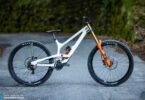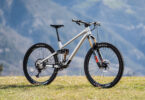Our Guide to Becoming a Guide
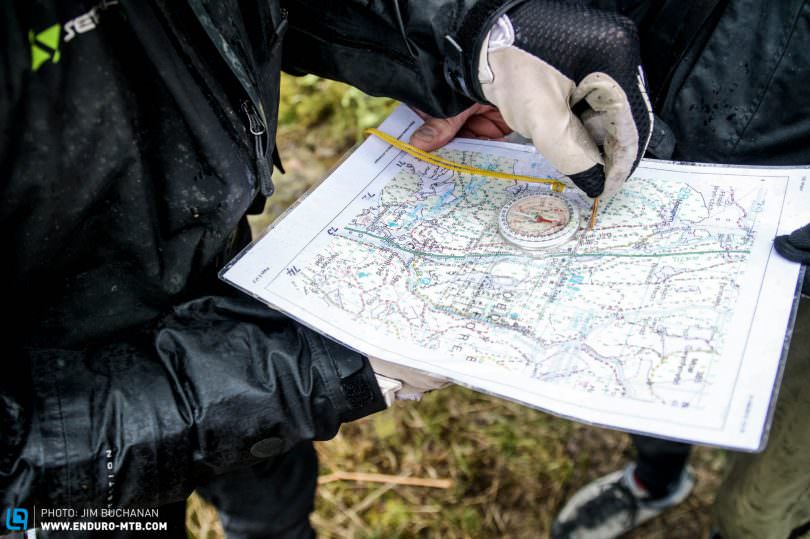
As more and more people around the world take up the hobby of mountain biking, it gives extra opportunities for folk to find work as mountain bike leaders, guides and skills coaches. The Mountain Bike Instructors Award Scheme (M.I.A.S) started in the UK, but is starting to be recognised across Europe and the world as a relevant qualification. We sent Jim along to take part in the two-day course to becoming a guide and obtaining his ticket as a leader and see what it was all about.
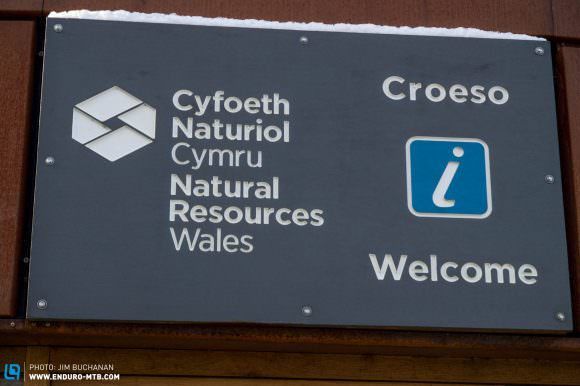
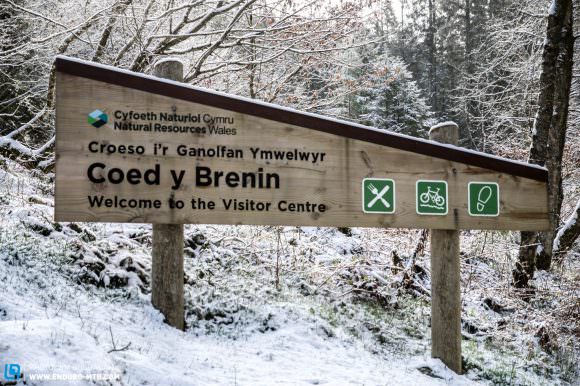
The M.I.A.S courses are held all around the UK by qualified instructors, for this course we headed over to the very popular trail centre of Coed Y Brenin in North Wales to hookup with Andrew Setchfield, our instructor for the weekend. Andrew has plenty of MTB experience having started riding back in the early 90’s in the early days of his army career. In 2004 Andy started entering some military xc competitions, in 2008 he qualified as an MTB leader and then started taking military personnel out, showing them the ropes of the mountain bike world. His passion for biking just keep on growing and he spent two years as Dan Atherton’s personal mechanic on the world race scene before opening his own bike shop. With this wealth of knowledge and experience becoming a coach to coaches must have felt like the obvious next step.
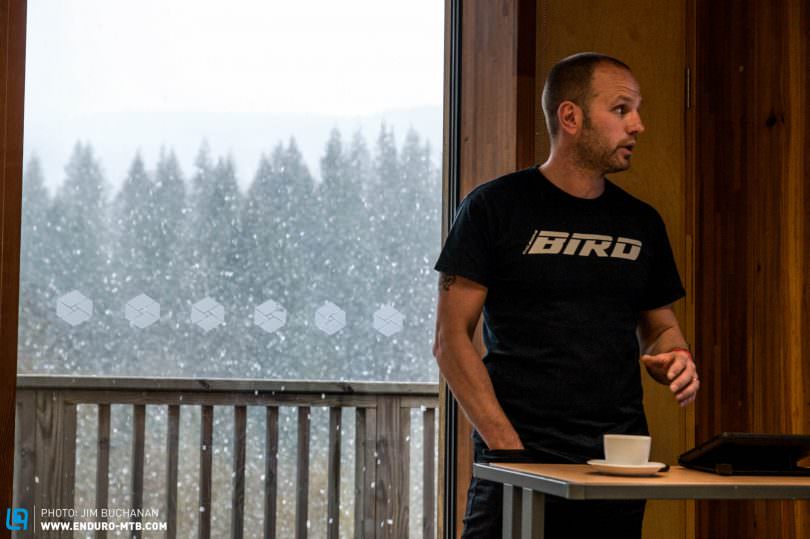
M.I.A.S isn’t the only MTB specific qualification, other qualifications are available including the M.B.C.U.K (Mountain Bike Coaching UK). That course and it’s syllabus is pretty similar but it is more focused on coaching than guiding. The Mountain Bike Leaders Association (M.B.L.A) and British Cycling also have their own qualifications, but when it comes to a worldwide reach M.I.A.S seems to have the largest reach with it’s tentacles stretched out far and wide.
Day 1 – In the classroom and back to basics
Straight away on meeting up with Andy you get the feeling he’s a no-shit kind of guy, his military training is obvious in the way he takes control, no hesitation or lack of confidence. He has a great manner with people, showing us, as the trainee coaches, exactly how we should be with our potential groups. There was four of us on the course, two chaps who worked in a children’s home (they needed the certificate for taking kids out riding) and another military guy, Andy gets plenty of the military sent his way so they can get another tick in their box of qualifications.

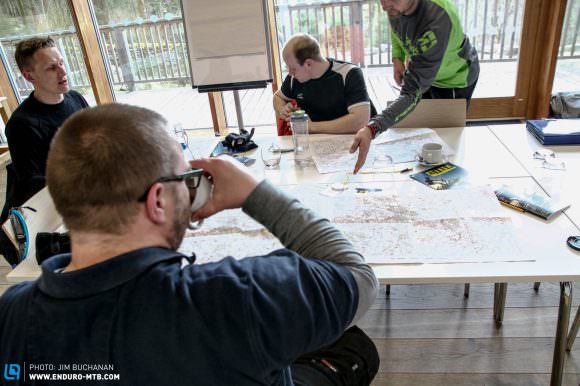
The first half of the day was spent based in the cosy classroom at the Coed Y Brenin Trailhead, with the late spring rain turning into snow outside the foggy window. On the table in front of us was displayed all the essentials necessary to carry with you as a leader, making us all realise we were rather ill-equipped and needed to do some weight training! There were things in there we never would have dreamed of needing, like a strap with carabiners, a group shelter and duct tape. We had a good talk about responsible riding when taking out groups; simple and obvious stuff, but so essential in giving riders a good name out there in the world of hikers, horse riders and the angry farmers! We have a brief lesson in the use of an Ordinance Survey map and a compass, it’s amazing how one of these can get you back from being lost and even save lives.

Once the rain had melted away we were out on the bikes running through some basic riding skills, bike prep and maintenance. For a lot of our readers and long-term riders, this may seem a bit like teaching nanny to suck eggs, but you have to remember we were being taught to teach others. Our future groups might have zero or very little experience or riding and we needed to be prepared for that. Even as an experienced mountain bike rider there is always something you will learn that you may have never picked up on before or just find out how someone else thinks through a task. On the maintenance front, we are taught about running through the ‘M’ check on a bike prior to riding. This is basically starting at the front axle, working your way up to the stem, back down to the bottom bracket, up to the saddle and finishing back down at the rear axle. During your ‘M’ check you go over every part of the bike with a structured check, to make sure all is well and in working order.
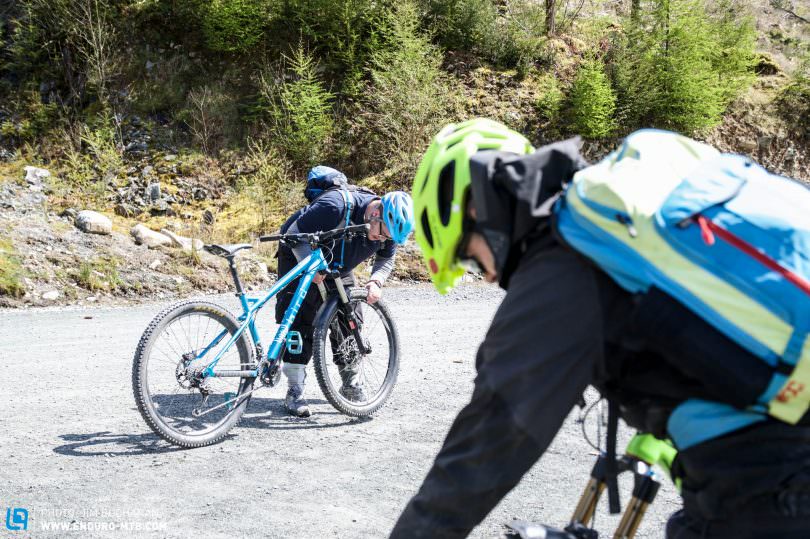
Next up Andy does our personal riding skills assessment, where we got through a sequence of varying riding tests to show we are capable of riding i.e. braking, climbing, different body positions etc. Simple things like this may come as second nature to many of us experienced riders, but if you don’t give new riders some of these basic tips, then you could be in for some very unnecessary crashes out on the trails. Once we’d proved we could actually ride a bike we hit the pump track to give riders the experience of exactly what a difference pumping and getting your weight back off drops can make.
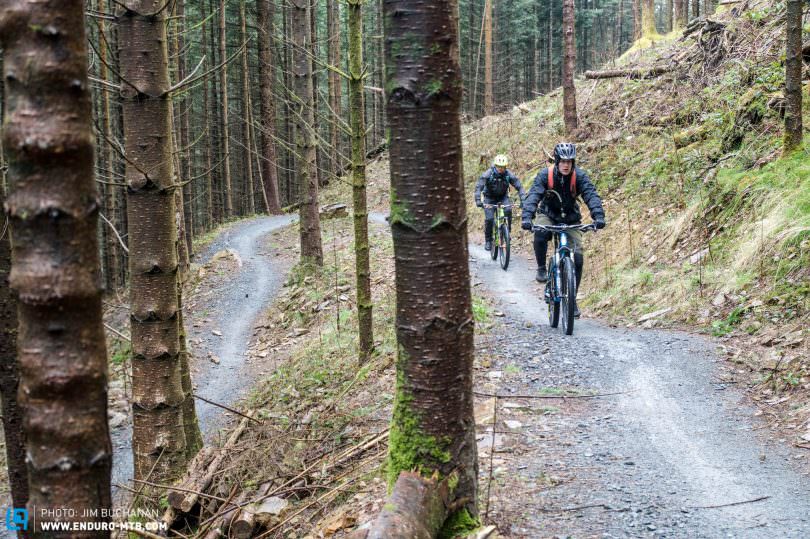
Back to the classroom and we get our maps out to plan a route for the following day, we have to work out distance, climbing gradients and the time it will take with the use of the OS map and the compass, harder than it sounds if the last time you did anything like that was 30 years ago at school! A 5 pm finish meant some headed off for local digs, whilst I made the most of the evening spring sunshine and hit the trails for a spin before chilling at local digs.
Day 2 – Taking control
A quick brew and we were all out on a simple trail for half the day just as the rain set in again. The day consisted of each person taking control of their personal part of the planned route, keeping riders in order, reading the map so as to take the correct turns and generally being in control. Andy would occasionally be a pain in the arse on purpose, emulating awkward students to test our leadership skills. He would ask dumb questions about his bike, ride off if he had the opportunity or fake a crash and basically do things he has seen students do on his course. At one stage when we could see the trail centre in the distance we had to get out the maps and compasses again and work out the quickest way back to the centre (if needed) how far it was and what kind of gradients to expect; fortunately, we all got it right!


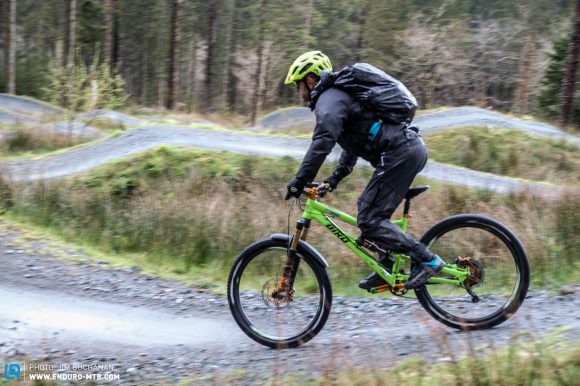
Our damp bunch of riders eventually returned to the trail centre for some welcome food and the opportunity to dry off out of the Welsh weather. The assessments had been done and Andy talked through his personal thoughts on us all individually and awarded us our certificates. The two guys who worked at the kid’s home and the military guy came away with a level 1 and I was really happy to be given my level 2 because of my higher experience. Having the level 2 is a great starting point for any kind of coaching/guiding business or job or just getting involved with the local kids club to pass on the love of biking to the next generation. It’s time I get my thinking cap on!
For more information visit mountainbikeinstructor.com
Did you enjoy this article? If so, we would be stoked if you decide to support us with a monthly contribution. By becoming a supporter of ENDURO, you will help secure a sustainable future for high-quality mountain bike journalism. Click here to learn more.
Words & Photos:


